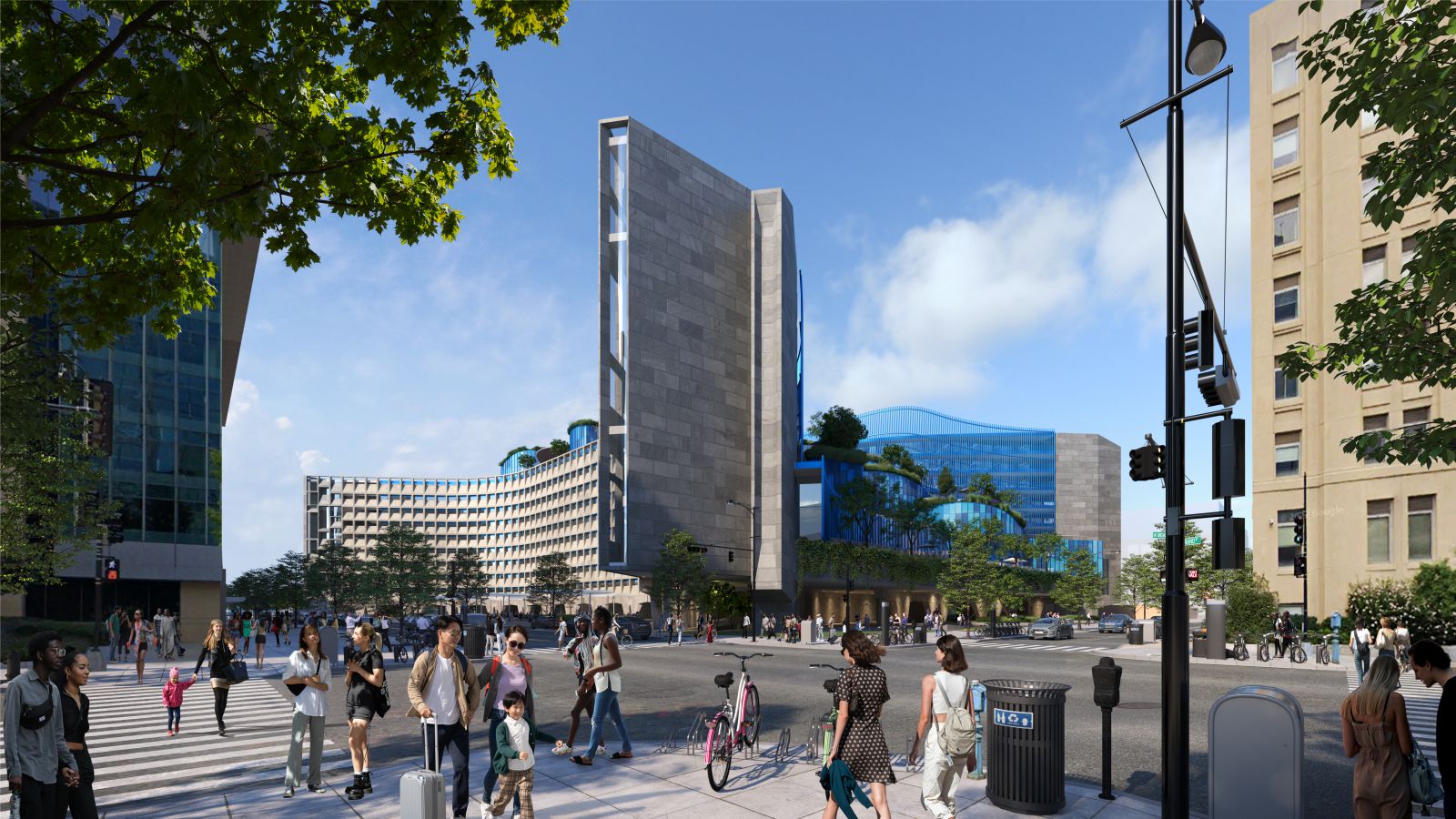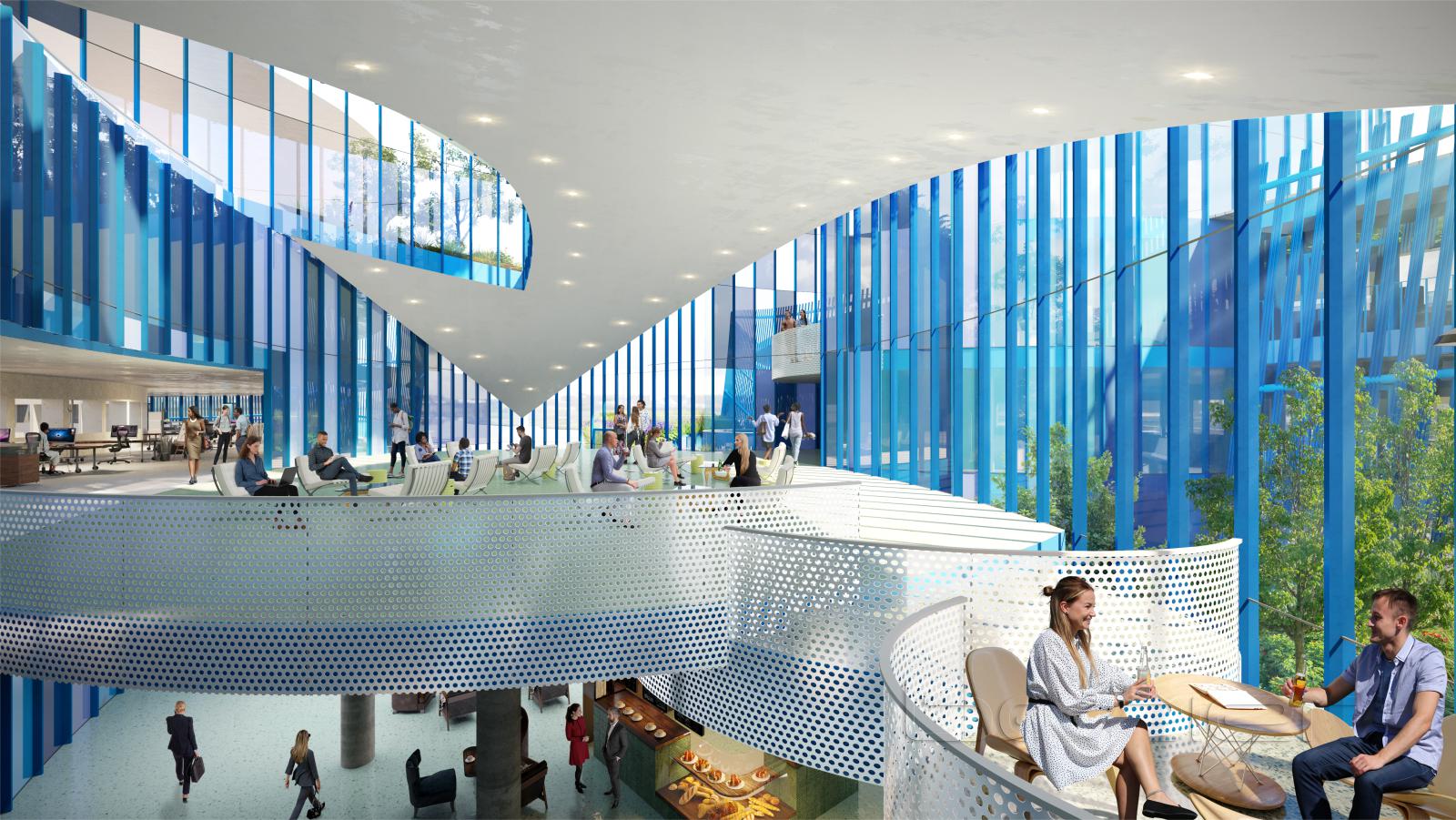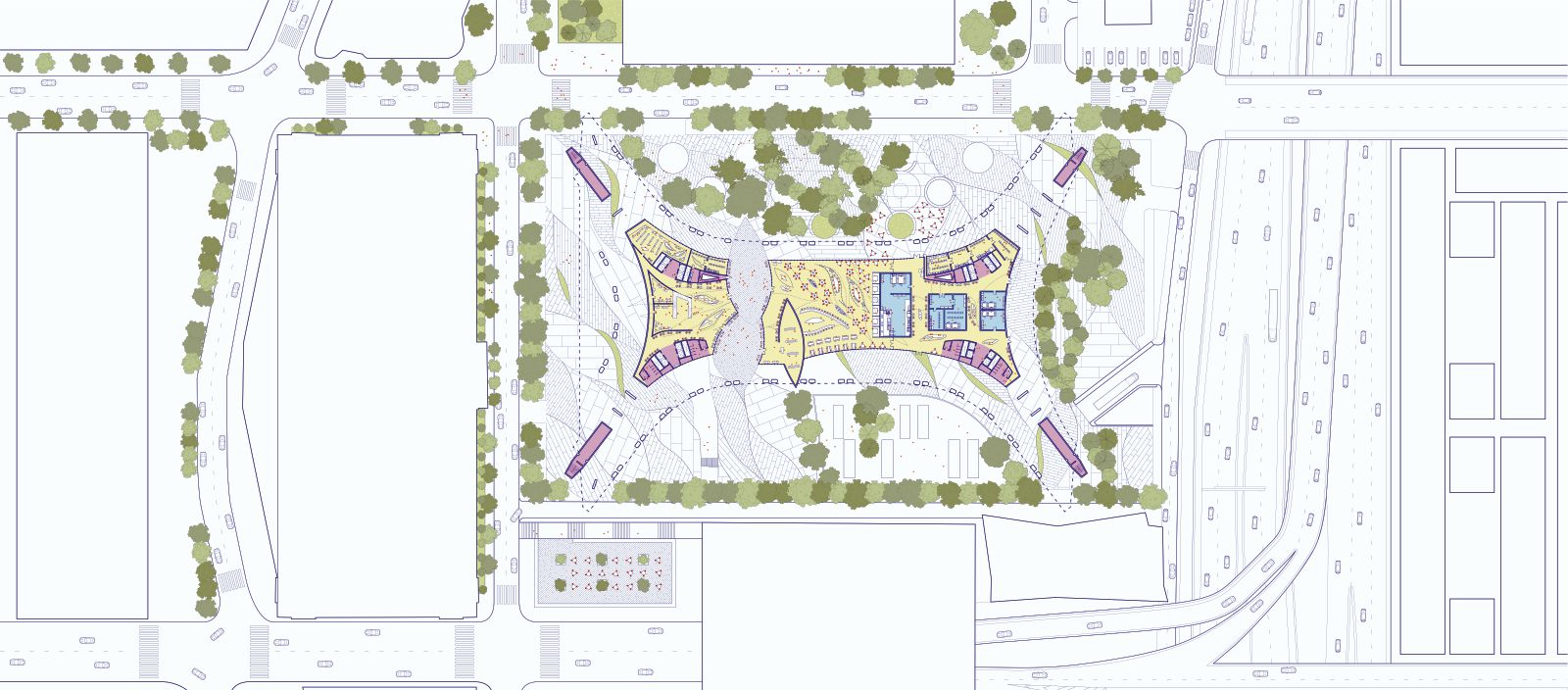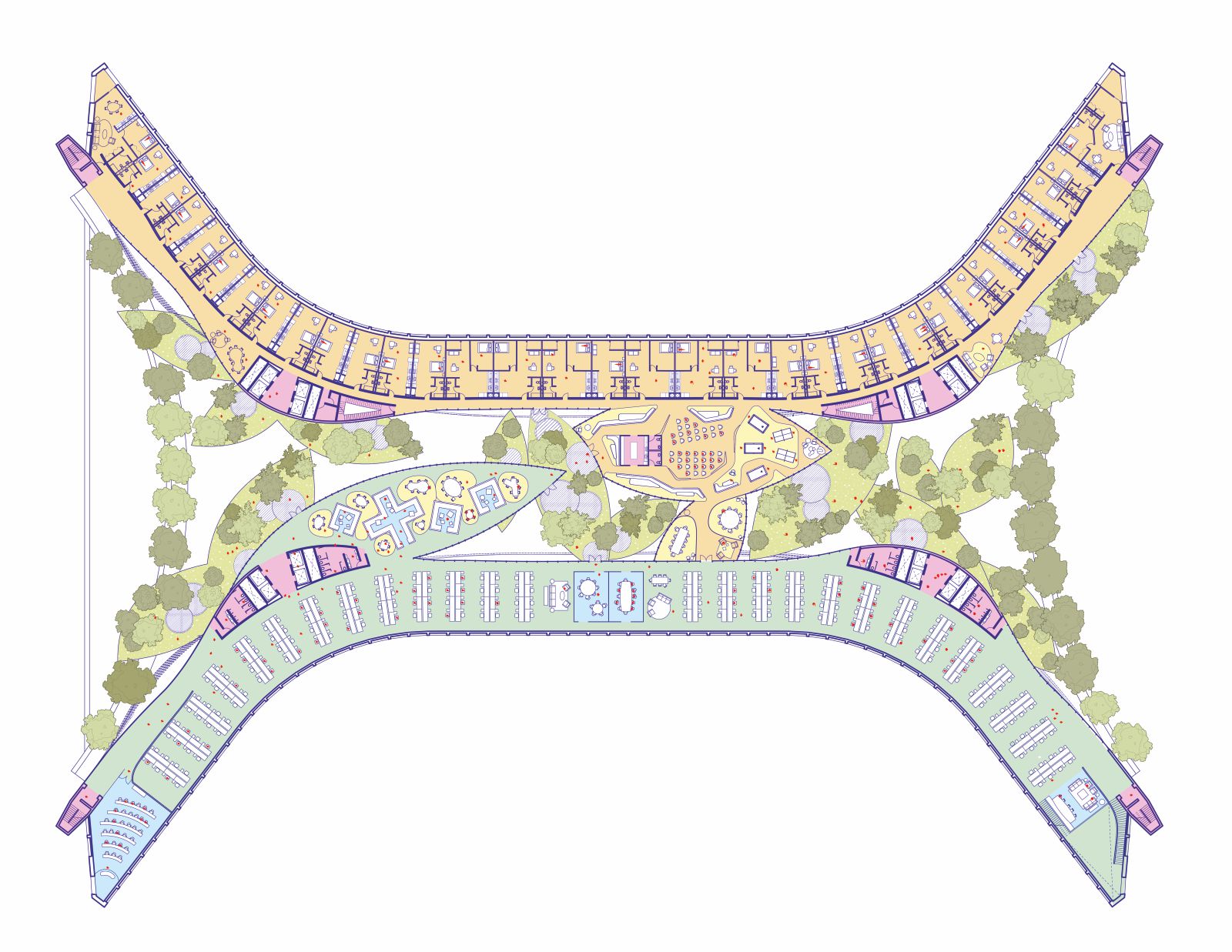Brooks + Scarpa proposes a contemporary re-imagination of the Robert C. Weaver Federal Building, which stands as an iconic piece of the Washington, DC cityscape with architecture by Marcel Breuer. Serving as the headquarters of the United States Department of Housing and Urban Development (HUD), this ten-story, 700,000 square-foot office building has been a symbol of federal authority since its completion in 1968.
The transformative vision aims to repurpose the American brutalist office building, adapting it to meet the evolving needs of a post-pandemic, remote-work world. This ambitious plan envisions a mixed-use structure that incorporates over three-hundred units of new housing, a reduced office footprint, and a range of community amenities.

The architects present this proposal as part of BRUTAL DC, a design exhibition held by Southern Utah Museum of Art, from October 14, 2023 — March 2, 2024. Showcasing Brutalist architecture in Washington DC, it features archival documents, reinterpretations, and photography, highlighting the historical roots, current status, and future potential of key Brutalist buildings in the city.
The underuse of federal office space in Washington DC
The Marcel Breuer renovation proposal by Brooks + Scarpa is informed by this newest era of remote work, which has prompted an exodus from Washington DC and many city centers across the United States. This trend has especially led to vacant office buildings. The architects note that seventy million Americans can now work remotely, and just 6% express a desire to return to full-time in-office work.

The team at Brooks + Scarpa notes the undeniable influence of the federal government on the office market. Even with the implementation of remote policies, all twenty-four federal agencies have reported that their in-person workforce has not returned to pre-pandemic levels. The use rates of federal agency headquarters in the city during early 2023 have ranged from just 10% to 50%.
Adaptive reuse and historic preservation
Recognizing the changing needs of this modern era, Brooks + Scarpa has envisioned an innovative solution to revitalize the urban core in Washington DC. In light of the growing housing crisis and the decline of the office market, the proposed transformation will convert the existing structure into a dynamic mixed-use space.

This new vision includes 300 units of housing, reduced office space, and community amenities. This approach mitigates the environmental impact of demolition and new construction, as well as the carbon-intensive nature of traditional building materials. Adaptive reuse offers significant environmental advantages over demolition or new construction.
By retaining the building’s foundation and framing while enhancing its systems, the energy efficiency of the structure is drastically improved, reducing energy consumption by up to 40%. This approach aligns with the National Trust for Historic Preservation’s findings, which indicate that it takes decades for new buildings to offset the initial climate impact of their construction — all while preserving a significant piece of architectural history.

Office building to housing: the design challenges
The transformation of an office building into a mixed-use facility comes with its challenges, such as accommodating natural daylighting and cross-ventilation. The HVAC and plumbing systems require overhauls to adapt to residential needs.
To overcome these hurdles, the architects propose removing the central and outdated interior core of the building. In its place, a central courtyard garden will be introduced, which will serve as a shared space for both office occupants and residential tenants.

Nearly 45% of the building will be allocated for affordable housing, offering residents the option of shared living to optimize space utilization while lowering costs. Between the housing and office wings, a central courtyard will serve as the building’s lungs, providing well-lit shared spaces and amenities.
These amenities include conference rooms, gyms, community rooms, hotel rooms, event areas, restaurants, and other spaces arranged in a multi-level vertical garden setting. This approach not only adapts the building for a housing model but also fosters more open, light-filled office spaces.

HUD, as the organization that administers federal and public housing policy for low-income residents, is leading by example. Their headquarters will showcase a new model for retrofitting mixed-use, affordable housing and office space.
By preserving the Breuer-designed structure, this proposal contributes to a more just and equitable future for all citizens. It serves as an adaptation to changing lifestyles and the evolving needs of our cities, providing a fresh perspective on the potential of repurposing outdated large-office buildings. Source and images Courtesy of Brooks + Scarpa.







